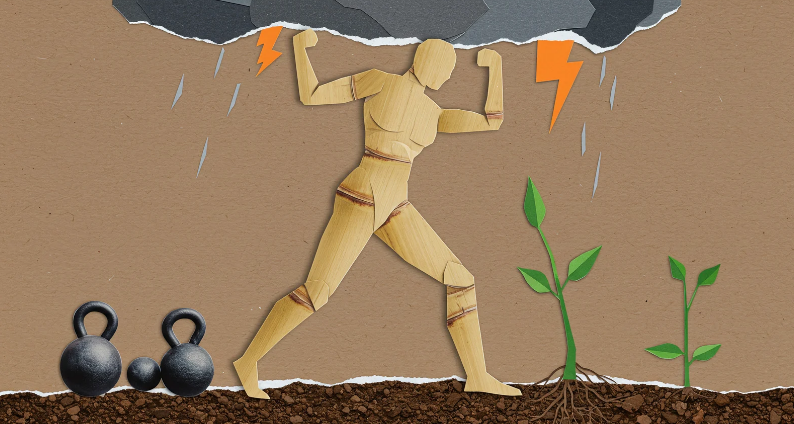If you’re in pain, you’re not alone.
Chronic pain affects a significant portion of the U.S. adult population. According to the Centers for Disease Control and Prevention (CDC), in 2023, 24.3% of adults experienced chronic pain, with 8.5% reporting that it frequently limited their life or work activities.
Pain doesn’t just affect productivity—it can prevent you from enjoying life, spending quality time with family, or exercising, which can ultimately affect overall health. But for those with chronic pain, exercise may actually be part of the solution.
Research indicates that, when done safely and under medical guidance, exercise can relieve pain and even increase tolerance to future pain through a process called exercise-induced analgesia. For knee pain, isometric exercises that strengthen the quadriceps have been shown to reduce pain and future incidents. In a review of studies on back pain, evidence suggests that combining exercise with education on the causes of back pain helps prevent future episodes.
Education is essential: participants in studies who exercised without understanding the root causes of their pain experienced less benefit. Consulting a doctor or expert in posture and biomechanics before starting is a good way to learn why pain occurs and how to address it safely.
Pelvic misalignment is a common underlying cause of low back pain. This can be a rotated or elevated pelvis that compresses the vertebrae of the lower back. Many people are unaware of this misalignment unless evaluated by a professional.
Although some exercises require specialized equipment, there are many simple moves you can do at home to strengthen your muscles and potentially reduce pain. Always consult your doctor first, and stop exercising if pain worsens.
Exercises for Knee Pain
Studies show that the following exercises can help reduce knee pain when done consistently:
1. Seated Isometric Quadriceps Contraction
Sit against a wall with a rolled-up towel under one knee. Contract the front of the thigh to press the towel against the floor, holding for five seconds. Repeat for up to 20 reps per leg. An alternative is to sit with your back away from the wall, lift one leg with the foot flexed, and contract the quadriceps while lifting and lowering. Repeat 10 reps per leg for 2–3 sets.
2. Mid-Flexion Seated Hold
Sit in a chair with back straight and feet flat. Raise one leg halfway and hold for five seconds. Lower and repeat for the other leg. Perform up to 20 reps per leg.
3. Prone Hamstring Contraction
Lie face down with legs straight. Bend one knee to bring your foot toward your butt while keeping hips square. Return to start and repeat for up to 20 reps per leg.
4. Bodyweight Step-Up
Step up and down on a single step, focusing on engaging hamstrings and glutes by keeping toes lifted and weight in heels. Maintain good posture with chest up and abs slightly braced. Step down slowly, focusing on the quadriceps.
Exercises for Low Back Pain
1. Passive Prone Extension
Lie face down with legs straight and palms flat just outside the chest. Press through the arms to lift the chest, keeping shoulder blades together. Hold briefly, then lower. Repeat 15 times. Keep the head neutral or allow it to hang if needed.
2. Supine Glute Contraction
Lie on your back with arms behind your head. Squeeze glutes while keeping elbows on the floor. Hold briefly, release, and repeat 25 times.
3. Supine Vacuum with Rotation
Lie face up with elbows behind your head. Exhale and draw your belly button toward your spine while lifting your chest. Lift legs slightly and make small circles with your legs, keeping elbows on the floor. Perform 15 circles.
4. Glute Bridge
Lie on your back with knees bent and feet flat. Squeeze glutes to lift hips until your body forms a straight line from knees to shoulders. Hold for five seconds and lower. Repeat five times.
5. Supine Twist
Lie on your back with arms in a T-shape. Draw one knee toward your chest and rotate it across your body, keeping shoulders on the floor. Turn your head in the opposite direction. Hold for five seconds and switch sides.
6. Standing Broomstick Twist
Stand with feet hip-width apart, holding a broomstick over your shoulders. Twist torso to the right, then back to center, and then to the left. Perform 20 twists total.
Whether due to age, joint issues, or preexisting injury, knee and back pain affects many, but it doesn’t have to slow you down. Incorporating some of these exercises into your routine can help strengthen your body, manage pain, and improve your quality of life.












